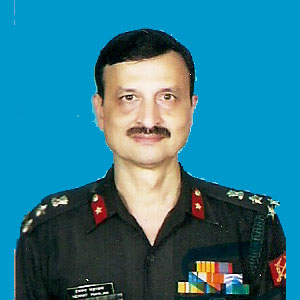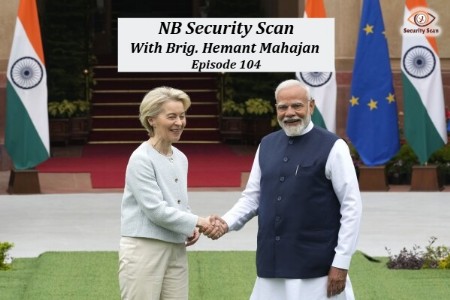#SecurityScan 16: Coimbatore blast, US Defense Strategy 2022 and more
National security and the lives of innocent people matter. The Tamil Nadu state government must come clean on the allegations of specific inputs by the central agencies not acted upon, regarding the Coimbatore blast.
Total Views | 360
This article is a summary of important events that have taken place in last one week affecting, India's national security.
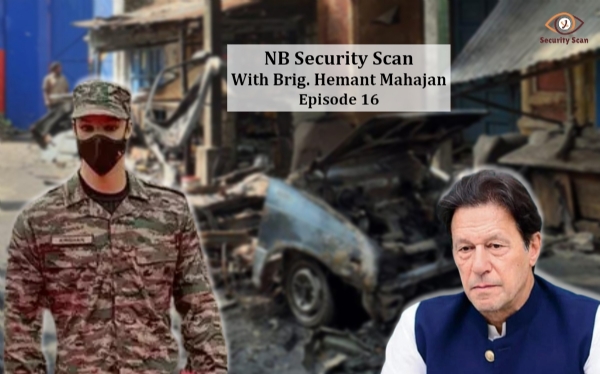
INTERNAL SECURITY
News in Brief
1. More Areas Covered By AFSPA Will Be Denotified -Lt Gen Kalita
2. The report by India Exim Bank, titled 'Reinvigorating India's Economic Engagements with Southern Africa', was released at the inauguration of the CII-Exim Bank Regional Conclave on India-Southern Africa Growth Partnership, where government officials and captains of business and industry met on Tuesday to discuss a wide range of areas of potential cooperation.
3. Army chief holds talks with Bhutanese Commander.
4. New southern army commander Lt Gen Ajai Kumar Singh appointed.
5. Giridhar Aramane takes charge as new defence secretary.
6. The Indian Army received exclusive Intellectual Property Rights of the new Camouflage Pattern and Design of Improved Combat Uniform.
Economic Security-India’s Foreign Exchange Reserves Jump By $6.56 Billion
India's foreign exchange reserves logged their biggest weekly jump since September 2021 and also rose for the first time in three weeks for the week ending October 28, helped by gains in both foreign currency assets and gold reserves. The foreign exchange reserves of Asia's third largest economy rose by $6.56 billion to $531.08 billion for the week ending Oct 28, according to data released today by the Reserve Bank of India.
Good management of foreign exchange reserves.
Environmental Security-Delhi's Toxic Air-Strictly Combat Annual Horror
The toxic mix of low wind speed, dipping temperature and dust, vehicular emissions, smouldering waste, wood or coal as well as stubble burning in farms around the National Capital Region has been around for many years This has once again engulfed the area into a thick blanket of smog. On Tuesday, the Air Quality Index (AQI) crossed the 400 mark to plunge into the ‘severe’ category. This is critical for those suffering from respiratory ailments, and also harmful for healthy people.
This grave annual feature has earned Delhi the notoriety of being among the most polluted cities in the world. Couple of remedial steps initiated since 2021 to tackle pollution have not helped.
Two steps are required. One, the daily recording of AQI and its forecast. Two, the Graded Response Action Plan designed to deal with any oncoming critical stage of pollution. The strict implementation of the two measures is essential for desirable outcomes .Most important control the uncontrollable farmers.
Blast in Coimbatore
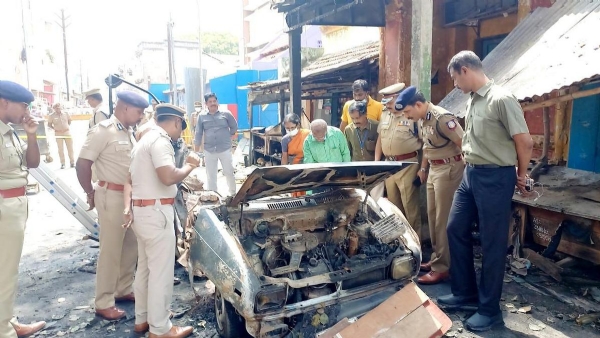
The case of an LPG cylinder blast in a car in Coimbatore on October 23 in which a youth was killed has become political in Tamil Nadu. The huge amount of explosives found in the house of the youth triggers the suspicion that he and his accomplices with suspected links to ISIS were up to something bigger and nastier and the accidental explosion killing only the driver saved the city and its people.
National security and the lives of innocent people matter. The state government must come clean on the allegations of specific inputs by the central agencies not acted upon. It must tell the people if they are indeed true, and if yes, then what stopped it from taking timely action.
EXTERNAL SECURITY
Army Foils Infiltration Bid, Kills Terrorist Along Loc In Poonch
Three terrorists were killed while attempting to infiltrate in Poonch. Three AK-47 rifles, a pistol and war-like stores have been recovered.
Another brave operation by Indian army.
On UNSC Counter-Terrorism Committee Meeting In India
India’s decision to host the United Nations Security Council’s Counter-Terrorism Committee (CTC) is an important marker of the Government’s ongoing effort to highlight terrorism issues at a time the global body has been more focused on the Ukraine war. Held in Mumbai and Delhi, it brought UN officials, and ministers and diplomats from all members of the Security Council (UNSC), to discuss challenges to the global counter-terrorism architecture. In Mumbai, the spotlight was on the 26/11 attacks. Despite the global nature of the terror targets, India has had an uphill battle since 2008 in international cooperation to pursue the case, and in bringing terrorists holed in Pakistan to full trial.
China continues to block designating LeT leaders on the UNSC 1267 terror list, a problem External Affairs Minister S. Jaishankar and U.S. Secretary of State Antony Blinken specifically mentioned at the conference.
In Delhi, the CTC focus was on online radicalisation and terror recruitment, terror financing through crypto-currency and virtual assets, and unmanned aerial system use including drones for terror strikes, transporting drugs and arms. The deliberations led to the “Delhi Declaration on countering the use of new and emerging technologies for terrorist purposes”. The Government appears to be making efforts to keep up the momentum from the CTC meet; it will host an international “No Money For Terror” conference (November 18-19), and a UNSC special briefing on challenges to global counter-terrorism efforts (December 15-16).
Why is the Tata-Airbus C-295 project important for Indian defence manufacturing?
The Airbus-Tata joint venture to manufacture C-295 medium-lift transport aircraft in Vadodara in Gujarat through the strategic partnership route is a important step that India has taken for “Atamanirbhar Bharat” as serious catalyst for military-industrialisation of the country.

While 40 C-295 aircraft will be assembled in India, the remaining 16 of the total ₹22,000 crore order will be flown from Spain. The Gujarat manufacturing will also create domestic supply chain of MSMEs to provide key parts for making the C-295 aircraft.
It is most important to involve private sector in hardware development as neither the defence PSUs nor the DRDO have been able to meet required deadlines or accountability. Fact is that the Su-30 MKI assembled/ manufactured by the HAL is more expensive than the one directly imported from Russia due to inherent inefficiencies and low productivity.
Rather than go for outright purchase of hardware in critical areas like submarines and fighters, India needs to go into joint development with the original equipment manufacturer so that it acquires the specialized skills for weapons design and development. India needs a military-industrial complex to bolster its strategic autonomy. The C-295 project is the right beginning.
DRDO successfully tests Ballistic Missile Defence(BMD) Interceptor
The AD-1 is a long-range interceptor missile designed for both low exo-atmospheric and endo-atmospheric interception of long-range ballistic missiles as well as aircraft. It is propelled by a two-stage solid motor and equipped with indigenously-developed advanced control system, navigation and guidance algorithm to precisely guide the vehicle to the target.
It is a unique type of interceptor with advanced technologies that are available to very few nations in the world. It will further strengthen India's BMD capability.This interceptor will provide great operational flexibility to the users and has the capability to engage many different types of targets.
India pitches INSTC, Chabahar for Central Asian economies
"Underlined that we need better connectivity in the SCO region built on centrality of interests of central Asian states. Will unlock the economic potential of this region in which Chabahar port and INSTC could become enablers. Connectivity projects should respect the sovereignty and territorial integrity of member states and respect international law," Jaishankar said after a virtual meeting of the 21st Shanghai Cooperation Organisation heads of government meet on Wednesday.
Indian counter to Chinese one belt one road for benefit of CAR countries.
Space and Undersea Cables: Analysing India’s Communication Security
Space and undersea cables are critical to India’s communications infrastructure. While India’s space programme has been largely successful, in undersea cables, India is barely uses undersea cables for communications with rest of world.
As global reliance on undersea cables and the data it carries, grows, India’s security interests strategically converge with maritime cables and space, and opens opportunities for international cooperation with countries like Japan,South Korea who are leaders in this field.
Boost to Make In India
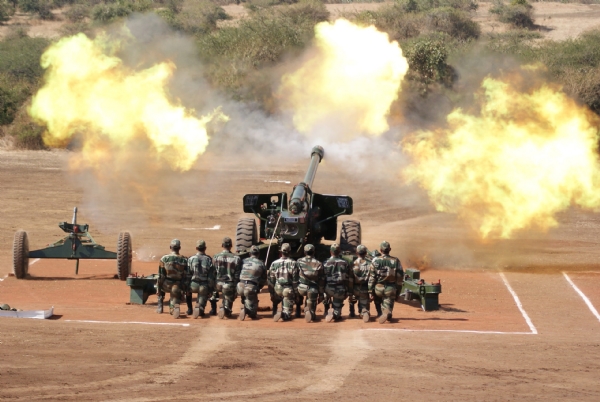
The Indian Army on Friday approved Project Sanction Orders of five Make II projects. These projects will give the necessary impetus to "Atma Nirbharata". The Army is focussing on the infusion of niche technologies through indigenous development. Following are projects whose PSOs have been approved by the Indian Army:
1. High Frequency Man Packed Software Designed Radio (HFSDR)
2. Drone Kill System
3. Infantry Training Weapon Simulator (IWTS)
4. 155mm Terminally Guided Munitions (TGM)
5. Medium Range Precision Kill System (MRPKS)
Pakistan On The Brink-Murderous Attempt On Imran Khan’s Life
The murderous attempt on Imran Khan’s life has dramatically raised the stakes and altered the nature of challenge he has come to pose to the ruling dispensation in Pakistan.
Till now Pakistan has been figuring more often on sports pages in the Indian media. Khan, former prime minister and chairman of the opposition political party, Pakistan Tehreek-e-Insaf (PTI), has been on a long march to Islamabad, challenging not just the legitimacy of the government of Prime Minister Shehbaz Sharif, but also hoping to create divisions within Pakistan’s armed forces leadership.
Will Khan end up laying siege to Islamabad? Will Bajwa retire and walk into the sunset, or will there be a military re-assertion in Pakistan? Can political leaders like Khan and Sharif arrive at compromise? Will the army dump Sharif and go back to backing Khan? Are Pakistan’s political parties and the armed forces the only actors in the game or do outside players — China, United States, Turkey and Saudi Arabia, have any role in power struggle?
Pakistan is embroiled in an economic crisis, implementing the International Monetary Fund’s fiscal and structural adjustment programme is vital. Will political instability and the developments of the next few weeks impact the economy? What role could the judiciary play at a time when other key institutions of the state are being challenged?
WORLD COUNTER TO CHINA HYBRID WAR
News In Brief
1. Taiwan, Missiles, Spying Set To Be China’s Priorities Under New Xi Term.
2. PLA taining for Urban Warfare for Taiwan Campaign.
3. Hypersonic Missile Deployment By 2030 by Japan
4. China Fishing Fleet Defied US Coast Guard cutter In Standoff On High Seas near Ecuador's Galapagos Islands.
5. China’s Private Security Firms To Shield Against ‘attacks on Chinese assets abroad.
6. Canada’s government ordered three Chinese firms to divest from a trio of small lithium miners based in the country, days after introducing tougher rules on foreign investments in the nation’s critical minerals sectors.
7. The US and Netherlands are expected to hold a new round of talks this month on restricting China’s access to advanced chip technologies, during which Washington will ramp up pressure on its ally to block ASML Holding NV from supplying China.
8. France is updating its Indo-Pacific strategy. The country’s president has insisted that the crisis in Europe will not distract the government from its ambitious goals in the Indo-Pacific, the most important of which is defending France’s sovereignty interests, which Paris feels have been challenged by China’s growing military power. To accomplish these goals, France will attempt to upgrade its military operational capability in the region and increase coordination with important international partners, including India and Japan.
9. China-US tensions force Taiwanese tech firms to Move to India/ Vietnam.
For winning technological war , world must tackle Chinese spies. Beijing is abusing openness of democratic countries to pilfer technology and ideas
The New U.S. National Defense Strategy for 2022

The U.S. Department of Defense has just issued an unclassified National Defense Strategy for 2022. In general, it highlights the past U.S. emphasis on the Russian and Chinese threats and lesser threats from states like Iran and North Korea, and it does provide more details about future plans than most of the Quadrennial Defense Reviews and other National Defense Strategy documents the United States has issued over the last two decades.
What is clear from the new strategy is that China is number 1 enemy. USA will focus all its comprehensive power against China which is good news for India.
China’s Influence on Global Media
Over the last two decades, China has invested in the international media system to shape different populations’ public opinion on China and to suppress anti-China media narratives. Its investments include funding media organizations and communications infrastructure in targeted countries, engaging with foreign publics on social media, launching dis- and misinformation campaigns, training journalists, and other strategies. In the process, independent, objective journalism has been eroded, thus challenging the resiliency of governments, civil society, and the media.
Plan For Fighting Info War with China: Lessons for India
The plan should be as under:-
Chinese thrive in the gray zone when it is difficult to decipher their activities or assign attribution. "Naming and shaming" is one way to disrupt this kind of aggression.Be proactive rather than reactive, maintain a robust forward presence.
Lesson for India is to take a long term multipronged approach to managing competitors by harnessing all elements of national power in mounting a response (diplomatic, information, military, and economic), increase Chinese costs to compete by overextending their capabilities and limiting their response options, and empower civil society institutions in friendly countries to reject adversaries' information campaigns.
The Indian government should prepare for Chinese responses to be multilayered across domains by coordinating whole-of-government response plans before executing Indian response.
Short- to medium-range intelligence, surveillance, and reconnaissance capabilities that augment Indian armies abilities to detect Chinese forces in disputed areas should be the key.
One year of AUKUS-: Bolstering Indo Pacific, Australia’s Security

One year in, the Australia-United Kingdom-United States technology sharing agreement, or AUKUS, has yielded few discernible results. Although anchored by an ambitious effort to build nuclear submarines (SSN) in Australia, the agreement also includes technology exchange across a broad set of other areas from quantum computing and electromagnetic warfare to unmanned systems and hypersonic weapons. Analysts in and out of government are finding few paths to building Australian SSNs before the late 2030s. But AUKUS could accelerate other opportunities to create sovereign Australian power projection capabilities within the next decade, such as with bombers, long-range missiles, dual-crewed US-built SSNs, or large undersea or airborne un crewed vehicles.
Lessons from Ukraine war
The Ukraine war has killed off the ground-attack aircraft or close air support.Russia’s close-air support jets have been decimated.
Russia’s growing use of Iranian-made kamikaze drones to kill civilians in Ukraine surprised many European and American observers. In addition to drones, Iranian ballistic missiles and cruise missiles have also become much more sophisticated and lethal. Iran is reportedly in the process of shipping missiles to Russia.
Indian Middle class is set to expand rapidly-Good News For Indian Economy
Households with an annual income range of Rs 5 lakh to Rs 30 lakh at 2020-21 prices are categorised as middle class. It represents 50% of the income earned, 48% of expenditure and 56% of saving. The scale of the middle-class footprint influences both the economy and society and it correlates to economic growth.
Globally, an expansion in the middle class has been a powerful force of economic, social and political change. The bulge in the middle class has had a durable impact on all societies as aspirations adapt to new circumstances. If India follows through on necessary political and economic reforms, the middle class will expand to 63% of households by 2047. That scale will certainly change society in fundamental ways,which is a very good news for Indian economy.
--
Bharati Web
Mes, Pune

